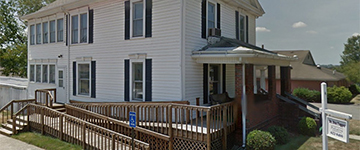Items filtered by date: December 2023
Facts About Chronic Ankle Sprains
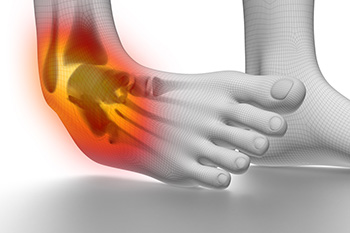
Ankle sprains occur when the ankle twists or turns, particularly in an inverted position, affecting the lateral ligaments. This strain forces body weight onto the outer edge of the ankle, resulting in stretching and potential tearing of ligaments that help to hold the ankle joint together. Repeated ankle sprains can lead to ankle instability, where the ankle turns inward during physical activity. Individuals who experience chronic ankle sprains may face thickening and irritation of previously sprained ligaments, causing impingement problems and discomfort near the ankle joint's edge. A severe variant, known as a high ankle sprain, damages supportive ligaments above the ankle joint. Recovery from a recurring sprain takes at least twice as long compared to more common sprains. For that reason, prevention is key. This involves performing exercises to strengthen ankle supporting muscles, wearing appropriate footwear for specific activities, and staying mindful of uneven surfaces. Prioritizing ankle health through preventive measures, seeking prompt medical attention, and following a comprehensive rehabilitation plan, can minimize the long-term effects of ankle sprains. Strengthening exercises, wearing proper footwear, and certain ankle braces can help to reduce the risk of ankle sprains. If you have sprained an ankle, it is suggested that you make an immediate appointment with a podiatrist for treatment.
Ankle sprains are common but need immediate attention. If you need your feet checked, contact Dr. Tupper from Coshocton Foot Health Center. Our doctor can provide the care you need to keep you pain-free and on your feet.
How Does an Ankle Sprain Occur?
Ankle sprains take place when the ligaments in your ankle are torn or stretched beyond their limits. There are multiple ways that the ankle can become injured, including twisting or rolling over onto your ankle, putting undue stress on it, or causing trauma to the ankle itself.
What Are the Symptoms?
- Mild to moderate bruising
- Limited mobility
- Swelling
- Discoloration of the skin (depending on severity)
Preventing a Sprain
- Wearing appropriate shoes for the occasion
- Stretching before exercises and sports
- Knowing your limits
Treatment of a Sprain
Treatment of a sprain depends on the severity. Many times, people are told to rest and remain off their feet completely, while others are given an air cast. If the sprain is very severe, surgery may be required.
If you have suffered an ankle sprain previously, you may want to consider additional support such as a brace and regular exercises to strengthen the ankle.
If you have any questions please feel free to contact our office located in Coshocton, OH . We offer the newest diagnostic and treatment technologies for all your foot and ankle needs.
Definition and Root Causes of Hammertoe
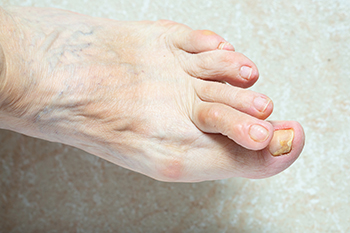
Hammertoe, a podiatric condition, unfolds as a deformity affecting the toes, altering their natural alignment. This ailment is characterized by a bending of the toe joints, resembling the shape of a hammer. The condition most commonly affects the second toe, but any toe can undergo this deformity over time. The root causes of hammertoe often stem from an imbalance in the muscles and tendons that normally keep toes straight. Shoes with inadequate space and high heels can exert pressure, forcing the toes into abnormal positions. Moreover, genetic predispositions and foot structure anomalies contribute to the development of hammertoe. Arthritis and other systemic diseases may exacerbate the risk. The progression of hammertoe typically unfolds gradually, starting with mild bending and progressing to fixed deformities if left untreated. Recognizing the definition and causes of hammertoe is essential for early intervention and the implementation of preventative measures, underscoring the importance of wearing proper footwear and having regular foot examinations. If you have symptoms of hammertoe, it is strongly suggested that you schedule an appointment with a podiatrist who can offer treatment methods that are right for you.
Hammertoe
Hammertoes can be a painful condition to live with. For more information, contact Dr. Tupper from Coshocton Foot Health Center. Our doctor will answer any of your foot- and ankle-related questions.
Hammertoe is a foot deformity that affects the joints of the second, third, fourth, or fifth toes of your feet. It is a painful foot condition in which these toes curl and arch up, which can often lead to pain when wearing footwear.
Symptoms
- Pain in the affected toes
- Development of corns or calluses due to friction
- Inflammation
- Redness
- Contracture of the toes
Causes
Genetics – People who are genetically predisposed to hammertoe are often more susceptible
Arthritis – Because arthritis affects the joints in your toes, further deformities stemming from arthritis can occur
Trauma – Direct trauma to the toes could potentially lead to hammertoe
Ill-fitting shoes – Undue pressure on the front of the toes from ill-fitting shoes can potentially lead to the development of hammertoe
Treatment
Orthotics – Custom made inserts can be used to help relieve pressure placed on the toes and therefore relieve some of the pain associated with it
Medications – Oral medications such as anti-inflammatories or NSAIDs could be used to treat the pain and inflammation hammertoes causes. Injections of corticosteroids are also sometimes used
Surgery – In more severe cases where the hammertoes have become more rigid, foot surgery is a potential option
If you have any questions please contact our office located in Coshocton, OH . We offer the newest diagnostic and treatment technologies for all your foot and ankle needs.
Types of Ankle Sprains
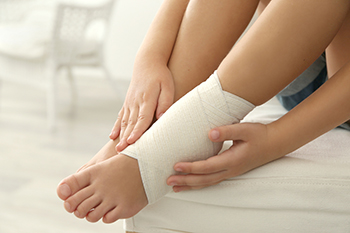
Ankle sprains, a common injury, can be classified into three types based on the affected area and ligament. Lateral sprains are the most frequent, occurring when the foot rolls outward, impacting the outer ankle ligaments. Medial sprains are less common, caused by the foot rolling inward and straining the inner ankle ligaments. High ankle sprains, though less frequent, are more severe, affecting the ligaments above the ankle joint, especially during activities where the tibia and fibula are forced apart. Each type of sprain varies in symptoms and severity, and their treatment can range from rest to surgery, in severe serious cases. If you have sprained your ankle, it is suggested that you schedule an appointment with a podiatrist for a diagnosis of which type of sprain has occurred, and appropriate treatment.
Ankle pain can be caused by a number of problems and may be potentially serious. If you have ankle pain, consult with Dr. Tupper from Coshocton Foot Health Center. Our doctor will assess your condition and provide you with quality foot and ankle treatment.
Ankle pain is any condition that causes pain in the ankle. Due to the fact that the ankle consists of tendons, muscles, bones, and ligaments, ankle pain can come from a number of different conditions.
Causes
The most common causes of ankle pain include:
- Types of arthritis (rheumatoid, osteoarthritis, and gout)
- Ankle sprains
- Broken ankles
- Achilles tendonitis
- Achilles tendon rupture
- Stress fractures
- Bursitis
- Tarsal tunnel syndrome
- Plantar fasciitis
Symptoms
Symptoms of ankle injury vary based upon the condition. Pain may include general pain and discomfort, swelling, aching, redness, bruising, burning or stabbing sensations, and/or loss of sensation.
Diagnosis
Due to the wide variety of potential causes of ankle pain, podiatrists will utilize a number of different methods to properly diagnose ankle pain. This can include asking for personal and family medical histories and of any recent injuries. Further diagnosis may include sensation tests, a physical examination, and potentially x-rays or other imaging tests.
Treatment
Just as the range of causes varies widely, so do treatments. Some more common treatments are rest, ice packs, keeping pressure off the foot, orthotics and braces, medication for inflammation and pain, and surgery.
If you have any questions, please feel free to contact our office located in Coshocton, OH . We offer the newest diagnostic and treatment technologies for all your foot care needs.
The Important Role of Foot Protection at Work
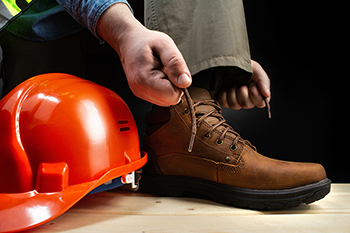
In the realm of occupational safety, the significance of foot protection while working cannot be overstated. Whether navigating construction sites, industrial settings, or healthcare environments, the feet are vulnerable to various hazards. Sturdy, well-designed work boots serve as the first line of defense against potential injuries. These boots are crafted to shield the feet from falling objects, electrical hazards, sharp objects, and chemical spills. In professions where standing for prolonged periods is common, the right footwear provides essential support, preventing fatigue and discomfort. Beyond physical protection, appropriate footwear promotes overall foot health by reducing the risk of conditions like plantar fasciitis and stress fractures. Recognizing the role of foot protection in the workplace emphasizes the need for employers and employees alike to prioritize the selection and maintenance of proper footwear. If you would like more information about specific foot protection during the workday, it is suggested that you speak to a podiatrist.
While working on the feet, it is important to take the proper care of them. For more information about working on your feet, contact Dr. Tupper from Coshocton Foot Health Center. Our doctor will treat your foot and ankle needs.
Working on Your Feet
Standing on your feet for long periods of time can cause stress and pain in your feet. Your whole body may experience change in terms of posture, back pain, bunions, callouses and or plantar warts. There are ways to avoid these conditions with proper foot care, smart choices and correct posture.
Positive Changes
Negative heeled shoe – Choosing this shoe type places the heel slightly lower than the ball of the foot. These are great for overall foot health. Find shoes that fit you correctly.
Go barefoot – Our feet were not designed to be enclosed for all hours of the day. Try to periodically expose your feet to air.
Eliminate Pain
Foot Exercises – Performing simple exercises, incorporating yoga and doing stretches are beneficial. This will allow increased blood flow to the area and muscles of the foot.
Achilles tendon – Stretching the foot out flat on the floor will relax the calf muscles and tendon. These exercises can be performed almost anywhere. Make sure you add these exercises to your daily regimen.
With a little bit of this information and knowing more about foot health, you will notice changes. Foot stretches and proper footwear will help with pain and prevent further issues.
If you have any questions please feel free to contact our office located in Coshocton, OH . We offer the newest diagnostic and treatment technologies for all your foot and ankle needs.

